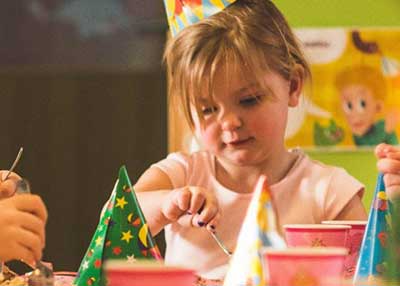
Preparing Your Child With Autism For A Birthday Party
Birthday parties are typically a highlight for a child and their parents as well, as they celebrate another milestone each year. For most typically-developing children, birthday parties are an enjoyable event filled with lots of celebration, fun, entertainment, games, and gifts! Nonetheless, for children with autism, birthday parties can be a daunting and challenging event, and some children with autism may demonstrate challenging behaviours as a result.
Here at EAP, it has been birthday season for several of our kiddos, and we have been hosting birthday parties and celebrations for our kiddos at our centre! We’d like to share a few tips and strategies to help you prepare your child with autism for a birthday party.
Identify The Areas Of Challenge and Potential Triggers
Children with autism may have a tendency to demonstrate sensitives towards certain stimuli and situations that could make them upset. It would be important to firstly determine the specific aspects or situations of a birthday party that are challenging for your child with autism.
Some potential tolerance issues and triggers could include:
- Tolerating loud sounds and noises
- Tolerating a crowd
- Being in an unfamiliar environment with unfamiliar people
- So on and so forth
Have A Desensitisation Plan For Your Child With Autism
Once you have identified the specific stimuli or trigger that your child finds difficult to tolerate, it would be important to have a systematic plan to desensitise your child to it. It would be important to start at the level that your child is comfortable with to keep them successful.
For instance, if your child finds it difficult to tolerate the loud sounds and noises and a birthday party, you would need to desensitise your child to these sounds. For more information on how to desensitise your child with autism to sounds, you may refer to this blog article HERE.
If your child finds it difficult to tolerate crowds, you would need to desensitise your child to a crowded social situation. Start off with the number of people that your child is able to tolerate within a room (e.g. 3 other people). If your child is able to tolerate this crowd size and demonstrate socially expected behaviours, systematically increase the crowd size (e.g. 4 other people, 5 other people, etc.).
Always remember to pair the desensitisation process with reinforcement! When your child is able to tolerate the stimuli (e.g. loud sound, crowd) at each level, it would be important to reinforce (reward) them at each level to make them feel successful. Additionally, do communicate the expected behaviours and reward in advance before starting the desensitisation practice, in order to motivate your child.
Preparing Your Child For A Birthday Party
Once your child with autism is successful with the desensitisation process, it is important that you prepare him/her in advance for their upcoming birthday party.
1. Social Story and Clear Visuals
Write a social story on the Birthday Party that you will be having for your child, and read this social story to your child several times/days leading up to the actual event. In your social story, do include details such as:
- The venue and surrounding environment of the birthday party
- The people they will see at the party
- The games and activities at the party
- The behaviours they are expected to demonstrate at the party (e.g. smile for photos, blow the candle)
It would also be important to utilise a visual schedule to communicate the flow of the party to your child. To do so, you may utilise pictures/photos or a written schedule if your child is able to read. This would give your child better predictability of what is happening next while at the party, and when they can go home.
2. Practicing the expected behaviours
If the birthday party is for your child, it would be important to teach the following skills:
- Smiling (at the camera for photos)
- Blowing out the candles
- Cutting the cake, etc.
If your child is attending another peer’s party, it would be important to teach your child the following skills:
- Wishing a peer “Happy Birthday”
- Giving a present to a peer
- Smiling (at the camera for photos),etc.
The above ideas are some of the basic guidelines to help assist your family in preparing your child with autism for a birthday party. As each child with autism is different, these suggestions will need to be individualised to further meet the different requirements of each child.
If you have any further questions, please do not hesitate to contact us! We hope you and your child with autism will have a great time at birthday parties!